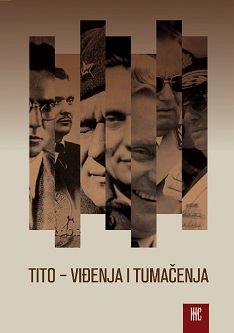Tito i nesvrstani. Iskušenja na putu stvaranja asocijacije vanblokovskih država
Tito and the Non-Aligned. Difficulties on the Way to Creating an Association of Out-of-Blocks States
Author(s): Dragan Bogetić
Subject(s): Political history, International relations/trade, Post-War period (1950 - 1989)
Published by: Institut za noviju istoriju Srbije
Keywords: Yugoslavia; non-alignment; movement; Tito; Nehru; Nasser;
Summary/Abstract: The pre-history of the Non-Aligned Movement is coupled with a number of differences among its members, which had to be overcome in order to design a platform of common action in international relations. Within that framework, the crucial role was doubtlessly played by the main champion of such an international strategy, the Yugoslav president Josip Broz Tito. The basic problem lay in the fact that his endeavors to convince the most influential African and Asian leaders to join him in his initiative for forming a broad association of block-free states art first didn’t meet with the desired response. The Indian prime-minister Nehru enjoyed great esteem in the world and he deemed it inopportune to join a movement whose members would be small and underdeveloped countries. He believed he himself could, through direct negotiations with great powers, get more easily the solutions he deemed in the interest of his country. Another important Tito’s potential partner, the Egyptian president Nasser saw himself in late 1950s in the role of unifier of all Arabs in Africa and Asia and had no interest in membership of a movement that would derail him from these leadership ambitions. The Indonesian president Sukharno for his part supported the idea of gathering of block-free countries - but on regional basis. He was guided by the idea of creation of a block of Asian and African nations whose action would be channeled into the uncompromising struggle against the world imperialism. Tito was aware that without support from Nasser, Nehru and Sukharno it would be impossible to form an international movement whose core would be made up of African and Asian states. Therefore he decided on tactics that was, in Yugoslav political circles, popularly called „step by step". The Yugoslav leader preached circumspectly and skillfully the political tenets of the Yugoslav project of the new system of international relations, depending on the current state of international relations and the mood of his fickle partners at a given moment He believed the time was working for him. Such estimate proved right The complicated international situation led to important changes in perception of current foreign political priorities of certain block-free countries and strengthened the interest in common and organized action. The first steps on that way were the summits of non-414 aligned states in Belgrade in 1961 and in Cairo in 1964. True enough, at these conferences Tito didn't manage to realize his ideas of turning the non-alignment into an international movement. He achieved that only at the summit in Lusaka in September 1970 where conditions were met for forming the first institutionalized mechanisms which were to make possible organized and coordinated activities of non-aligned countries. During the period after Lusaka the non-aligned acted increasingly often and increasingly more aggressively. However, at this time, often called „the golden era of non-alignment" the polarization within the movement concerning alliance with the block of pro-Soviet states gradually became increasingly visible and sharp. The last years of Tito's life were marked by his permanent conflict with Fidel Castro, the main proponent of the idea of „natural alliance" of the nonaligned with the socialist block. That pressing came to a head at the summit in Havana in September 1979. Since Tito died the next year, his victory in the duel with the Cuban president was also his last political victory.
Book: Tito - Viđenja i tumačenja
- Page Range: 405-415
- Page Count: 11
- Publication Year: 2011
- Language: Serbian
- Content File-PDF

